Traditionally in Australia, the family farm has been passed on to the next generation. But…
Farmers and koala conservation
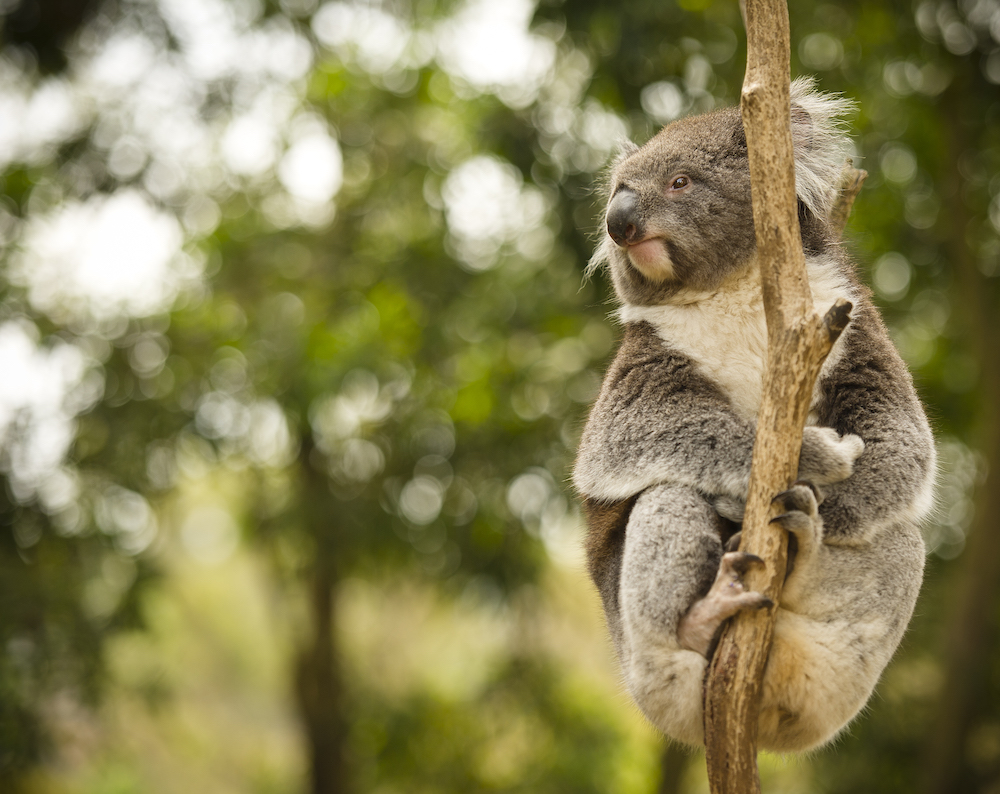
Koalas may be an icon of Australia, but they are in trouble. Once numbering in the millions, the fur trade, disease, habitat loss, roads and domestic dogs, have seen the population crash to somewhere between 40,000 and 100,000 across Australia. According to the NSW Government, there are 30,000 to 40,000 koalas in NSW, but that was before three years of drought and last summer�s catastrophic bushfires. Ecologists are still counting the cost of 2019/20’s Angry Summer but slow moving, tree dwelling koalas are likely to have been hit harder than most native species. And so the debate around farmers and koala conservation is rightfully gaining more and more momentum.
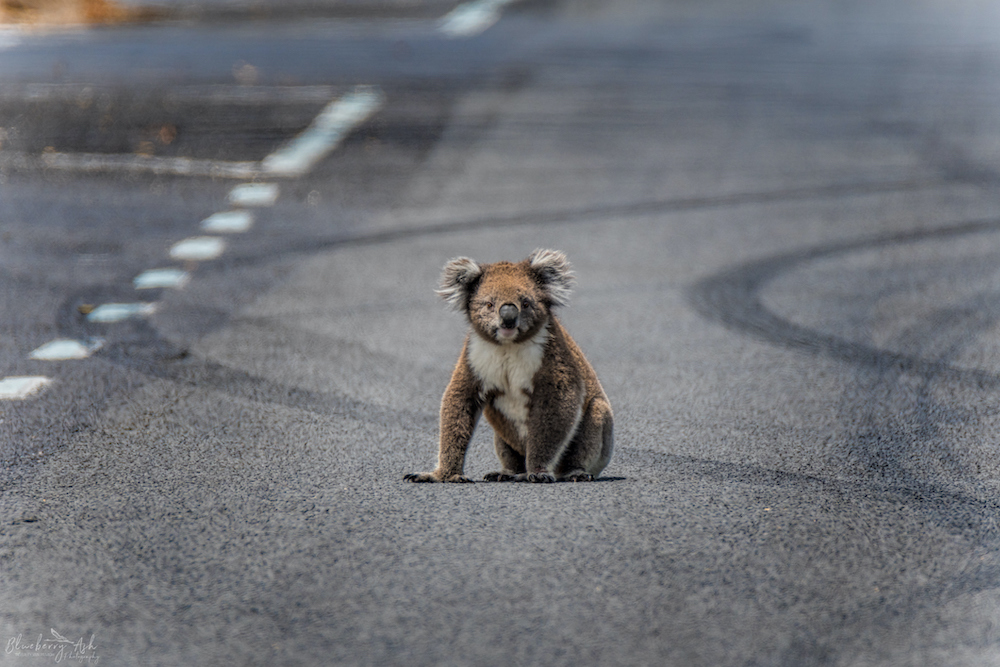
Before Koala SEPP
Even before the advent of the Koala Habitat Protection SEPP (State Environmental Planning Policy), on March 1, there was conflict between people trying to protect koalas and other interests. However, much of the conflict is due to ignorance, as farmers and koala conservation usually go hand in hand � everyday farmers in NSW are at the forefront of showing how koala conservation and farming can and do co-exist.
Much of the reason for the perceived land use conflict is that a high percentage of remaining koala habitat � vegetation that is critical for the preservation of the species � is on private land rather than in national parks or state forests.
Indeed, the presence of koalas on a farmer�s land has been regarded as a mixed blessing by many. According to the owner and director of Stringybark Ecological, David Carr, �Most farmers who have koalas value them quite highly. There is an old, somewhat unreasoned fear that if your land is home to koalas or some other threatened species, national parks will take your land away. But many farmers don�t want people to know the koalas are there and they don�t want people bothering their koalas. They love having them there and they�re concerned for the welfare of the animals.�
Farmers lend a hand
Carr has been working with farmers and other landholders on the Northern Tablelands for the past four years to get a better picture of koala populations on both private and public land from Nowendoc to Armidale. �It started off searching for koala scats (dung pellets) and more recently we�ve been doing catch, release and GPS collaring around Armidale where we�ve been able to track the animals for up to six months,� he says.
About private 50 landholders have been involved in the initiative, ranging from just reporting koala sightings to allowing Carr�s team on their land to look for koala scats.
�One landholder has seen phenomenal regrowth from the rain we have had recently. His land is covered in koala feed tree species, so they are reserving a 200-acre paddock and letting it regenerate for koala habitat.�
On the Northern Tablelands, however, the koala conservation brass ring must go to Teesh Wright, of Fernleigh. Teesh runs an F1 sheep breeding and cattle fattening operation on 800 acres of leased and family owned land, near Black Mountain.
A neighbouring property, Winterbrae, was historically part of Fernleigh but had been sold off and Teesh had long wanted to acquire it. It eventually came up for sale but Teesh and her husband were so concerned that it may be koala habitat they decided that no matter what, they were going to buy it so they could preserve it.
�When the owner said they were going to go to auction I wrote them a letter saying I wanted to preserve the land and in response they agreed to negotiate with us and they accepted our best price. We then got David Carr to confirm it did have koalas, so we are planning on grazing only lightly and keeping it for koala habitat. After the rain it�s regenerating beautifully.�����
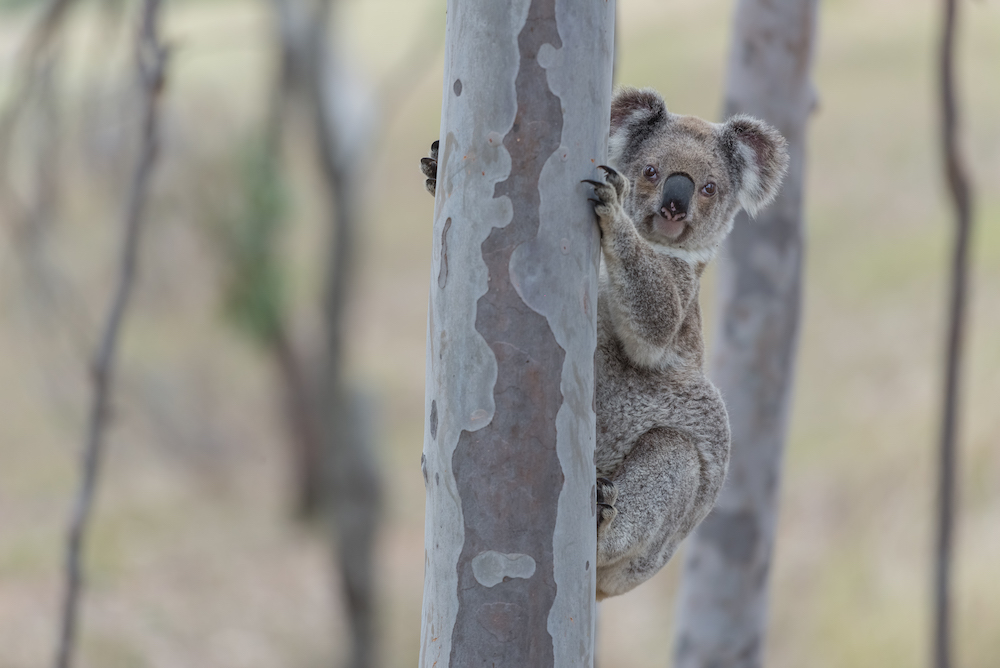
Farmers and koalas � Saving our Species program
Tamworth Regional Landcare Association, in concert with the �NSW Government�s �Saving Our Species� (SOS) program, is working with private landholders in the Liverpool Plains and Gunnedah Shires to plant at least 30 hectares of new koala habitat across both Shires by the end of 2021.
In 2018, five landholders from the Gunnedah LGA (Emerald Hill; Marys Mount and Curlewis) were contracted to establish multi-species tree corridors totalling 17 hectares. Despite prolonged drought during 2018 and 2019, significant rainfall early this year has enabled all contracted landholders to progress with planting. The SOS program assists contracted landholders by providing 50 percent of the estimated cost of koala habitat establishment (including cost of fencing, ground preparation, tube stock natives, tree guards etc).
One of the most critical elements for koalas to survive as a species is connectivity in the landscape. One of the most critical elements for koalas to survive as a species is connectivity in the landscape. Fragmentation, where patches of extant habitat become separated from each other by human habitation is a major issue as koalas in those patches may become inbred and can get hit by cars or attacked by domestic dogs when trying to move to other areas.
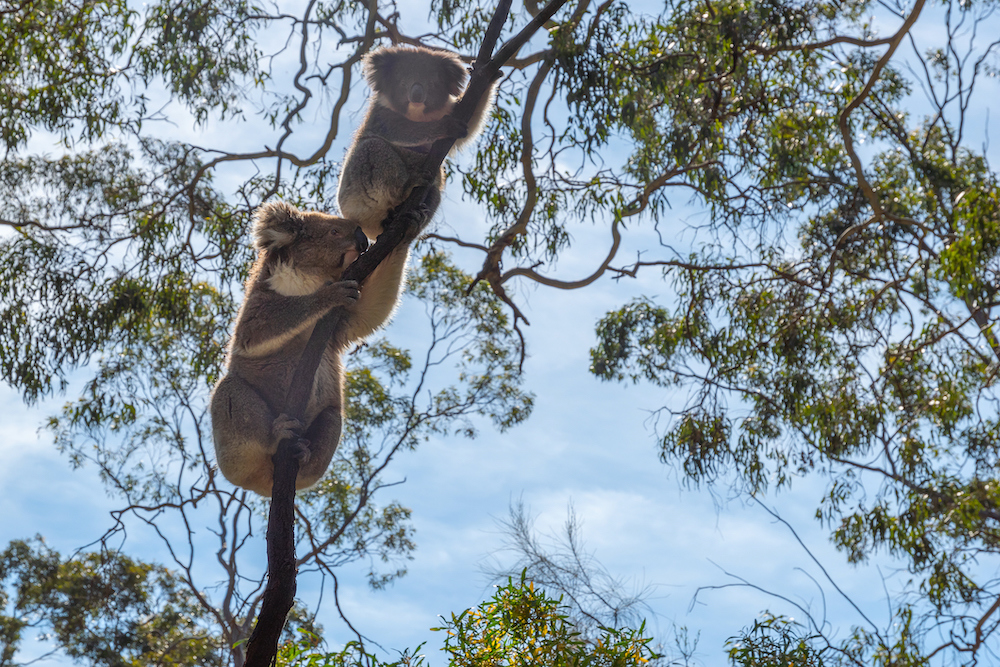
William Cutler, a landholder at Telegraph Point on the NSW North Coast planted koala feed trees starting in the early 90s on his 40ha farm. �Initially there was a small healthy population that used our farm and adjoining properties,� he says. �But this stopped in about 2010 when a large clear-felled logging operation disrupted the connectivity, and I haven�t seen a koala since.�
According to Bangalow Koalas� President, Linda Sparrow, 50 percent of koala habitat on the NSW North Coast is on private land, and the organisation is working with Byron Bay, Lismore and Richmond Valley councils, various Landcare groups, the NSW State Government, various NGOs, business, community groups and local landholders to provide the connectivity the animals need.
�We�re trying to create a corridor from Byron Bay to Tenterfield and then going north to the Queensland border and south to Grafton. We started in April 2016 as a way to protect a 400- metre strip of trees in Bangalow, and now we�ve got 32 plantings on 27 properties including several working farms and macadamia plantations. Our aim is to have planted 250,000 rainforest and koala habitat and feed trees by 2025.�
As the impacts of the 2019/2020 Black Summer and an increasingly variable climate continue to impact upon koalas, what is certain is that farmers will be doing their bit to conserve this icon of Australia.
The Tree Troff
With years of drought and then the worst bushfires in living memory, koalas and many other native species have been doing it tough. Conditions have been so tough for koalas that Gunnedah farmer, Robert Frend, developed a koala water drinker, the Tree Troff. You might rightly think that koalas don�t need to drink water � they get all they need from gum leaves.
In normal conditions, it is true, koalas do not need to drink. But these are not normal times. After years of drought and then bushfire, the eucalypt leaves that koalas get their sustenance from have dried out so much there�s not enough moisture for the koala to survive. As a result, they venture down to ground level in search of water where they can fall prey to dogs or get hit by cars. Gunnedah locals have also found heat-stressed and dehydrated koalas dropping out of the trees.
Frend partnered with the University of Sydney�s Dr Valentina Mella to develop the water repository, starting off with half a go-kart tyre and a water drum in a tree. The latest version uses a metal pole with a water tank connected to a solar powered pump which keeps a bowl at tree height half full of water. A microchip reader and camera are positioned over the bowl to capture images and, if present, microchip data which is giving researchers useful data about the koalas using the waterer.
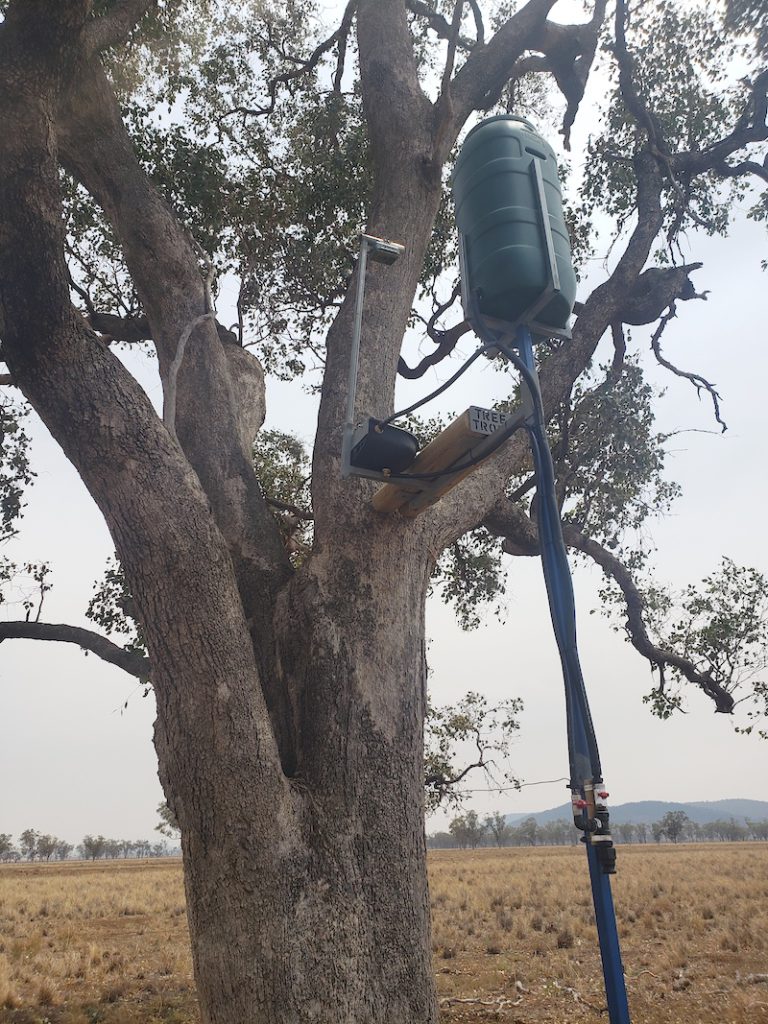
SEPP wrong instrument for rural lands
The entry into force of the Koala SEPP on March 1 has been and remains a major source of conflict between government and farmers and koala conservation.
While no environment consultant is prepared to go on the record (they�re too reliant on government-financed work) off the record many will say there are two main issues with the Koala SEPP when it comes to farming land. Firstly, it was designed for use in peri-urban areas around Sydney and other major urban centres; secondly, it relies too much on modelling and not enough on field ecologists doing work on the ground.
NSW Farmers’ CEO, Peter Arkle says �the SEPP is not a suitable mechanism to regulate the conservation of koalas in the farming landscape. Koalas can co-exist with most farming activities and where risks need to be managed this should be accomplished through a fit for purpose set of controls developed for managing impacts on koalas in the farming landscape under the Land Management Code.”
Arkle says that the only way to overcome the majority of NSW Farmers members� concerns will be to amend the SEPP to remove its application to RU1 and RU2 land, and to legislatively uncouple the Land Management Code from the SEPP when there is an opportunity to bring amendments to the Local Land Service Act 2013 and its regulation to parliament.
“In the interim, all land zoned RU1 and RU2 should be excluded from the Koala SEPP,” he says. “Alternatively, it would be appropriate to call a halt on the operationalisation of the new SEPP until landholders are provided with the opportunity to review and ground-truth the mapping. To address the SEPP�s obvious inequities, and to help farmers help koala conservation efforts, there needs to be a process for landholders to review or appeal regulatory maps without cost; as well as an agreed upon methodology and verification process for identifying koala presence. In addition, regulation needs to be clearly limited to land where koalas are present.�


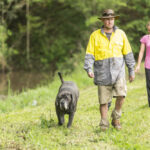
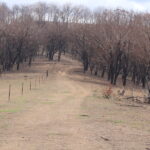





Before the political stoush about the Koala SEPP I didn’t have a view. So I went an looked up on the interactive map to see if any area of our farm was affected, knowing there had never been an koalas on the property. To my surprise almost every inch of the property is a “koala habitat” and I will need a Koala Habitat Survey, Koala Count and Koala Management Plan before I can submit DA’s to replace fences, sheds and our house that were lost in the fires on 4 Jan 20. This is madness. Sincerely, I would love to have koalas, and if I did I’d fence of f acres to protect them and plant feed tree species to help. I build and attach nesting boxes for natives using a cherry picker, but they were also lost in the fires. The sad thing about this current SEPP is that some political parties (Liberal and ALP) are painting farmers as anti Koala when nothing is further from the truth. I’ve been a Liberal voter, but I think it’s time to consider the Shooters, Fishers and Farmers Party because someone needs to have that balance of power to bring some sanity to debate on matters like this.
Maintaining koala habitat and ensuring the koala population flourishes should be considered a national and state priority. In many other countries, farmers are incentivised for their work in managing areas of privately held land to ensure crucial waterways, landscapes and habitats are maintained. These are usually known as PES (Payment for Environmental/Ecosystem Services). Through this system, private landholders are recognised as land managers of natural assets that are highly valued by the broader community and, in the case of Australian wildlife, would have a measurable market value in terms of tourism. In general, such systems are publicly funded in recognition that the natural assets they protect and preserve are valuable to all.
Introducing a PES system for preservation of koala habitat could be vital for ensuring the longer term survival of the wild koala population. A large amount of preparatory work would be needed to map the existing habitat areas accurately and to model a system of payments based on the land area
identified on private land. A training program for farmers and land managers would be needed and a detailed, realistic management program modelled so that payment to landholders for their service is proportionate and appropriate.
When wind turbines are sited on private land the energy generator pays a fee. Similarly, what I am suggesting is that land holders should receive payment for their role in preserving a national asset. The loss of koalas and koala habitat is a national disgrace and we must all take responsibility for turning this trajectory around as fast as we can. Now that the SEPP has been voted down, NSW has the opportunity to lead the way in developing powerful new strategies for protecting important habitat areas. NSW Farmers should act now to get a PES system underway.